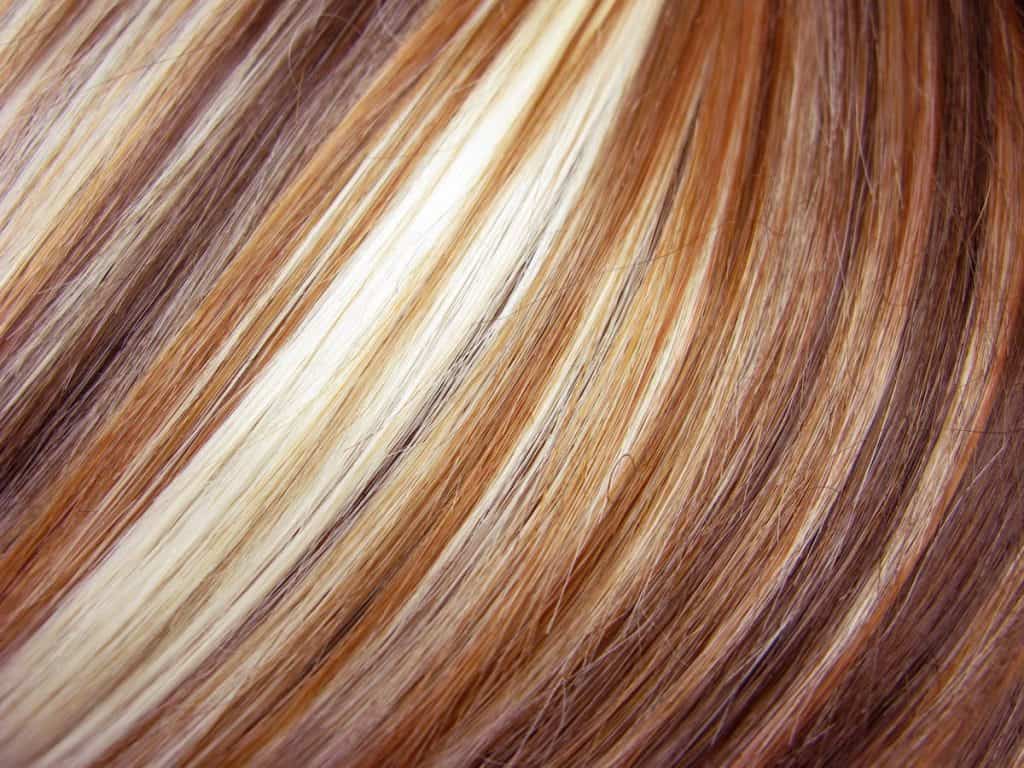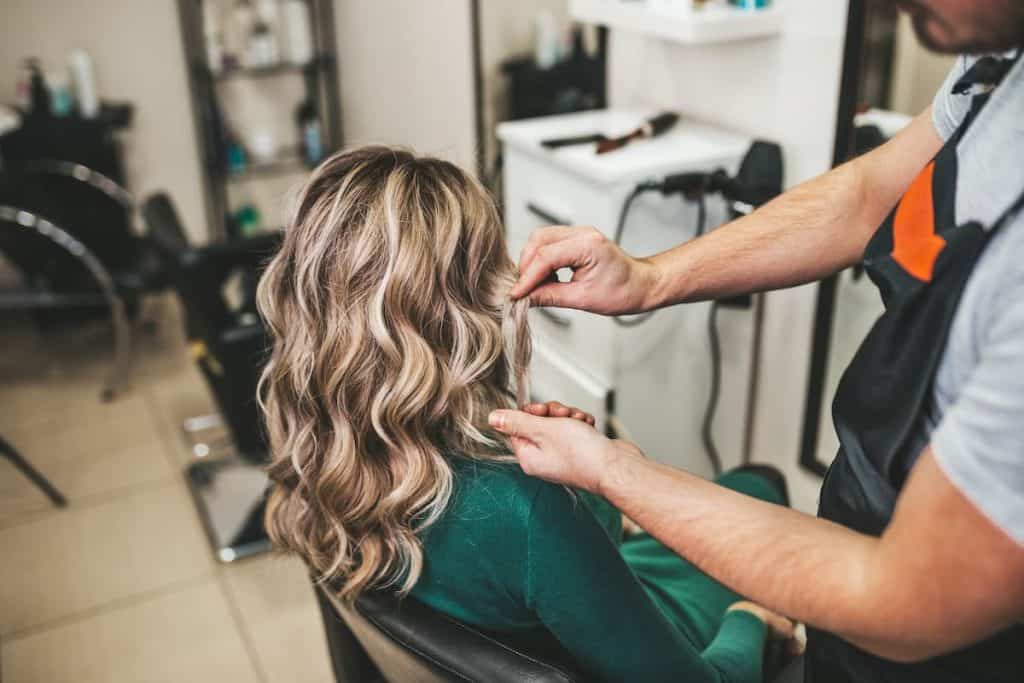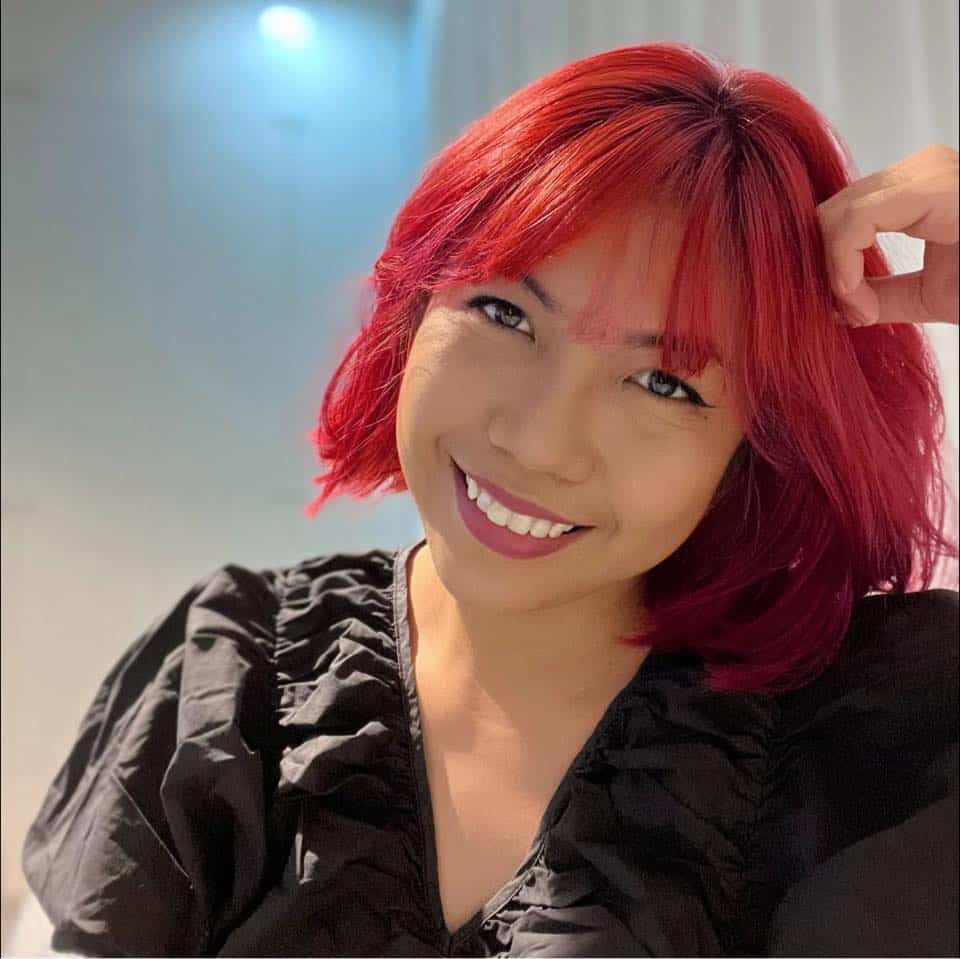Balayage vs. Highlights: What’s the Difference?
This post may contain affiliate links, which means I may receive a small commission, at no cost to you, if you make a purchase.
Always ready to hop on the hottest hair color trends? Then you might have gotten wind of the heated balayage vs. highlights debate!

Highlights have outlived countless coloring crazes, sustaining their status as a go-to style since the ’80s. At least until balayage stepped into the limelight and took social media by storm!
But wait — what exactly is the difference between these two techniques? Is one more healthy or stylish than the other? Which one suits your hair type and natural hair color best?
Read on as we break down the major differences between balayage and highlights in depth. We’ll also give you a few great tips on how to choose the right technique for yourself before hitting the salon.
Table of Contents
What Are Highlights or Foil Highlights?
Highlights or highlighting is an umbrella term for hair coloring techniques like traditional highlights, babylights, ombré, and balayage.
All of these methods involve partial lightening of the hair using hair dye or lighteners. This lifts the natural base color to give depth and dimension to the hair’s overall appearance.
Traditional highlights achieve this look by sectioning strands of hair, then lightening them from root to end.
To prevent unsightly streaking, stylists separate lightened strands from natural hair by wrapping them in aluminum foil.
The “foiling” technique also helps trap heat, which allows the bleach to lighten each strand as evenly and effectively as possible.
There’s no end to the number of benefits highlights offer. For one, they add depth, texture, and volume to your hair while accentuating your gorgeous facial features. Getting highlights can also give dull skin a gentle glow.
What Is Balayage?
Fun fact: balayage is not a look, but rather a technique!
Derived from the French word “balayer” (meaning “to sweep”), balayage is a freehand painting technique where stylists paint certain sections of the hair in a sweeping motion.
Unlike highlights, balayage doesn’t follow a strict sectioning pattern or start from the roots down to the ends.
Instead, stylists apply dye or lightener on random sections of hair.
Since seamless blending is a defining feature of balayage, they often begin with fine applications at the top or nape, gradually making them denser toward the ends.
The result? Gentle, soft-swept highlights with a multi-tonal effect! Balayage also mimics the appearance of lightened hair from sun exposure, giving you perpetually sun-kissed hair.
Key Differences Between Balayage and Highlights
Still not sure how to distinguish between these two hair highlighting techniques? No problem; we’re here to help!
Here is a more comprehensive breakdown of the main differences between balayage and highlights:
| Traditional Foil Highlights | Balayage |
|---|---|
| Uses foil to separate strands | Uses freehand application without foils; occasionally uses saran wrap for more effective lightening |
| Sticks to a strict coloring pattern | Applies dye or lightener in a random customized pattern |
| Lightens strands evenly from root (or near the scalp) to tip | Typically lightens strands from the mid-sections down to the base; starts with fine applications in the middle and ends with dense applications at the base |
| Creates a stark contrast between natural hair color and lightened strands | Blends with your natural hair color seamlessly |
| Has a bolder, more dramatic look | Has a more natural-looking, sun-kissed appearance |
| Features uniform highlights that can easily be distinguished from the rest of the hair | Creates a soft gradient with subtle highlights with no obvious line of demarcation |
| Requires frequent touch-ups | Requires less frequent touch-ups |
Remember that these are the general features of each technique. Some of them may be customized depending on each person’s needs and preferences as well as their stylist’s unique approach.
For instance, some hair colorists may start at the top of a client’s hair when using the balayage technique for a more dramatic effect.
You can also achieve a softer look with traditional highlights by asking your stylist for darker, less chunky streaks.
Balayage vs Highlights: Side by Side Comparison
Can’t visualize the differences between these two techniques in your head? This quick guide below helps you compare balayage vs highlights side by side:
Full Highlights vs Full Balayage
Full balayage:
Full highlights:
As their shared descriptor suggests, a full balayage and full highlights both involve creating highlights and placing them throughout all of your hair. The difference lies in their techniques, which the two examples above showcase.
Notice how the full highlights emphasize the dramatic, visually arresting contrast between the base hair color and the lighter shades.
The full balayage highlights, on the other hand, has an equally stunning yet subtler contrast, with hints of light hues at the top and nearly-full coverage at the ends.
Partial Highlights vs Full Balayage
Full balayage:
Partial highlights:
Did you know partial highlights can be more subtle and natural-looking than a full balayage in some cases?
As you can see in the examples above, the full balayage boasts a splashy gradient while the partial highlights create a more laid-back look.
Partial highlights can also be placed strategically around specific areas of the face. Doing this accentuates your best features and adds volume to thin hair.
Partial Balayage vs Full Highlights
Partial balayage:
Full highlights:
Of the four variations on this list, a partial balayage and full highlights may seem like they have the least in common. But surprisingly enough, they can look quite similar!
In a partial balayage, color is applied to select areas of the hair instead of the entire mane. Because stylists focus on coloring certain sections, the result may resemble full highlights.
Still, a partial balayage is far softer and less obvious than full highlights.
Partial Balayage vs Partial Highlights
Partial balayage:
Partial highlights:
Most style experts recommend starting with either a partial balayage or partial highlights if you’re getting your hair colored for the first time.
Choosing a partial lightening technique will help you assess whether a full one would suit your hair type and facial features without drastically changing your hair’s appearance.
For the budget-conscious, partial highlights — whether traditional or balayage — are a godsend. Getting them proves that you can achieve or maintain a gorgeous style without spending a fortune.
A good tip is to alternate between partial and full highlights to prevent color fading while sticking to a tight budget.
Should I Get Balayage or Highlights?
Now we’re down to the most important question of all: is balayage or highlights better for you?
Well, the answer depends on various factors. Personal taste will likely be the strongest influence in your decision-making process.
However, it’s also vital to consider which technique goes best with your natural hair color or base color and your hair type.
To help you make the right choice, we’ve created a quick guide to whether highlights or balayage is best for specific hair colors and types.
Let’s see which hair-lightening technique comes out ahead in each category!
Balayage vs Highlights on Blonde Hair
Blondes do have more fun — at least in the hair color world! From ashy tones to electric hues, their naturally light hair allows them to play with different colors at a whim.
So if you’ve got gorgeous, versatile blonde locks, both balayage and highlights are sure to go well with your mane.
However, stylists often prefer applying traditional highlights to blonde hair. Think about it: making lighter shades visible on already light hair can be tricky! So the subtle contrasts of balayage may not work on blondes.
Foiling, on the other hand, lifts the hair’s brightness more effectively to create more distinguishable highlights. Plus, it gives your stylist more control over the overall tonal effect of the final results.
Winner: Highlights
Balayage vs Highlights on Brown Hair
It goes without saying that dyeing hair is more of a challenge for brunettes than blondes. Good news, though: both balayage and highlights look spectacular on brown hair, particularly light brown hair!
Highlights lighten your hair while bringing out the depth and fullness of your lush brown tresses. On the flip side, balayage gives you a soft yet eye-catching blend of rich tones.
Worried that streaks of ultra-light blonde highlights may look tacky on you? Don’t fret. Your stylist will help you choose the exact shade that matches your natural hair color, such as caramel.
That said, balayage highlights tend to translate better on brown hair. The way dark strands melt into a lighter base is more visible on darker hair, achieving a breathtaking effect that stands out.
Winner: Balayage
Balayage vs Highlights on Dark Hair or Black Hair
Anyone with dark hair will tell you that coloring their hair is next to impossible. But that shouldn’t stop you from experimenting with highlights!
In fact, both balayage and foil highlights are much better options for dyeing your hair than a single-process hair color, which gives your hair an entirely new base color and thus increases the risk of damage.
On that note, balayage requires the use of stronger bleach for a full gradient effect, which can result in dull, brittle, and damaged hair.
You can always go with a darker balayage or a partial balayage if your heart’s set on trying out the style. But in this case, foil highlights may be the safer option.
Winner: Highlights
Balayage vs Highlights on Red Hair
Nothing turns heads quite like a full head of flaming red locks, whether dyed or natural.
So if you want to play up the vibrance of your fiery tresses or tone down their intense hues, you can opt for either balayage or traditional highlights to get the job done.
Keep in mind that while highlights complement red hair in general, they can make your overall hair color err on the brassy or overly loud side. Even pops of muted highlights still create a high-contrast look with excess warmth.
Instead, you can choose balayage for a softer contrast that lends a little lightness without compromising on balance.
Winner: Balayage
Balayage vs Highlights on Gray Hair
Looking to ditch haphazard fixes for gray hair? Highlights and balayage can help you embrace your grays gracefully while maintaining a stylish, well-kept look.
However, balayage may not be able to provide the coverage your hair needs. Those with only a few silver streaks may find it more or less effective, but it won’t work on those with predominantly gray hair.
As such, most stylists recommend highlights for folks with gray hair, whether the goal is to conceal or accent. Foil highlights can also bring life and body to thinning grays, providing more depth and dimension.
Winner: Highlights
Balayage vs Highlights on Curly Hair
Curly-haired gals often steer clear of any hair coloring methods, especially if they’re faithful to the famed Curly Girl Method. However, curlies shouldn’t be exempt from having fun with colored hair!
Highlights and balayage are both great options for folks with curls since they don’t involve covering the entire head of hair with bleach.
Stylists are divided on which technique is best for curlies. Some experts assert that balayage looks odd on curls when the natural hair color starts growing out, which makes the random highlighting patterns more obvious.
Others say highlights are less natural-looking precisely because they have controlled patterns.
In this case, there’s no clear answer. You can consider other factors such as the length and color of your locks.
Winner: Tie
Balayage vs Highlights on Straight Hair
Adding depth, dimension, and volume is a top priority for those with straight locks. Luckily, balayage and highlights can both help in that department!
These two techniques create the illusion of thick, lush hair by using color contrasts. But because straight hair is all lines and no bends, highlights may look quite harsh on it.
Opting for balayage provides contrast not only in color but in texture as well. The soft, light, and fluid shades of balayage balance out the stick-straight hair strands and darker hues of your natural locks.
Winner: Balayage
Balayage vs Highlights on Wavy Hair
Blessed with year-round beach waves? Accentuate your tresses with highlights or balayage!
Because you’re not as worried about volume as straight-haired folks or hair damage as curly-haired folks, you can freely take the plunge with the highlights of your choice.
Keep in mind that chunky highlights and balayage work best for your waves. If your hair is a little thinner, you may want to try highlights for more dimension from root to tip.
But if you’ve got lush waves, balayage may help emphasize your hair’s thickness.
Winner: Tie
FAQs About Highlights and Balayage
Balayage Hair vs Highlights: Which Lasts Longer?
Balayage lasts longer than highlights, lasting 3 to 4 months without a refresh. Highlights require touch-ups every 6 to 8 weeks, although you can make them last longer with proper hair care.
Is Balayage More Damaging Than Highlights?
Yes. Both highlights and balayage use lightening agents that can potentially damage your hair, but the latter uses a higher developer or a stronger bleach.
Don’t worry, though! You can use a deep conditioner to shield your hair against damage before getting balayage done.
Our favorite is the Elvive Total Repair 5 Power Restore from L’Oreal Paris, which is specifically designed to protect against future damage.
Are Highlights More Expensive Than Balayage?
Nope! Since balayage requires more extensive coverage of the hair as well as a customized hand-painting technique, it typically costs more than highlights.
Can I Get Balayage and Highlights Together?
No need to settle for one choice when you can get the best of both worlds with balayage and highlights together! This will create a more pronounced contrast balanced by a soft gradient at the ends for a dramatic yet sophisticated look.
You can also get balayage with highlights and lowlights for more contrast.
Get Creative With Highlights and Balayage

The highlights versus balayage debate may never be fully settled. But now you can pick new highlights that suit your skin tone, hair type, hair color, and — most importantly — your unique style.
All that matters in this debate is that you rock the ’do that suits you!
Can’t get enough of hair color facts and tips?
Take a look at some of these related articles:

